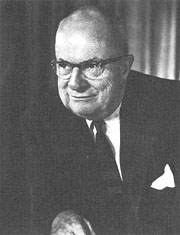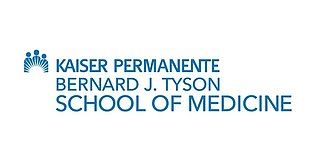Related Research Articles
In the United States, a health maintenance organization (HMO) is a medical insurance group that provides health services for a fixed annual fee. It is an organization that provides or arranges managed care for health insurance, self-funded health care benefit plans, individuals, and other entities, acting as a liaison with health care providers on a prepaid basis. The Health Maintenance Organization Act of 1973 required employers with 25 or more employees to offer federally certified HMO options if the employer offers traditional healthcare options. Unlike traditional indemnity insurance, an HMO covers care rendered by those doctors and other professionals who have agreed by contract to treat patients in accordance with the HMO's guidelines and restrictions in exchange for a steady stream of customers. HMOs cover emergency care regardless of the health care provider's contracted status.

Pain management, pain killer, pain medicine, pain control or algiatry, is a branch of medicine that uses an interdisciplinary approach for easing the suffering and improving the quality of life of those living with chronic pain. The typical pain management team includes medical practitioners, pharmacists, clinical psychologists, physiotherapists, occupational therapists, physician assistants, nurses, and dentists. The team may also include other mental health specialists and massage therapists. Pain sometimes resolves quickly once the underlying trauma or pathology has healed, and is treated by one practitioner, with drugs such as analgesics and (occasionally) anxiolytics. Effective management of chronic (long-term) pain, however, frequently requires the coordinated efforts of the pain management team. Effective pain management does not mean total eradication of all pain.

Kaiser Permanente, commonly known simply as Kaiser, is an American integrated managed care consortium, based in Oakland, California, United States, founded in 1945 by industrialist Henry J. Kaiser and physician Sidney Garfield. Kaiser Permanente is made up of three distinct but interdependent groups of entities: the Kaiser Foundation Health Plan, Inc. (KFHP) and its regional operating subsidiaries; Kaiser Foundation Hospitals; and the regional Permanente Medical Groups. As of 2017, Kaiser Permanente operates in eight states and the District of Columbia, and is the largest managed care organization in the United States.

Henry John Kaiser was an American industrialist who became known as the father of modern American shipbuilding. Prior to World War II, Kaiser was involved in the construction industry; his company was one of the companies that built Hoover Dam. He established the Kaiser Shipyards, which built Liberty ships during World War II, after which he formed Kaiser Aluminum and Kaiser Steel. Kaiser organized Kaiser Permanente health care for his workers and their families. He led Kaiser-Frazer followed by Kaiser Motors, automobile companies known for the safety of their designs. Kaiser was involved in large construction projects such as civic centers and dams, and invested in real estate, later moving into television broadcasting. With his wealth, he established the Kaiser Family Foundation, a nonprofit, non-partisan, charitable organization.

Physical medicine and rehabilitation, also known as physiatry, is a branch of medicine that aims to enhance and restore functional ability and quality of life to people with physical impairments or disabilities. This can include conditions such as spinal cord injuries, brain injuries, strokes, as well as pain or disability due to muscle, ligament or nerve damage. A physician having completed training in this field may be referred to as a physiatrist.
Manual therapy, or manipulative therapy, is a physical treatment primarily used by physical therapists, physiotherapists, occupational therapists to treat musculoskeletal pain and disability; it mostly includes kneading and manipulation of muscles, joint mobilization and joint manipulation. It is also used by Rolfers, massage therapists, athletic trainers, osteopaths, and physicians.
Benjamin F. Feingold was a pediatric allergist from California, who proposed in 1973 that salicylates, artificial colors, and artificial flavors cause hyperactivity in children. Hyperactivity is now classified as Attention deficit hyperactivity disorder (ADHD).
The Vaccine Safety Datalink Project (VSD) was established in 1990 by the United States Centers for Disease Control and Prevention (CDC) to study the adverse effects of vaccines.

The University of California, Los Angeles School of Medicine—known as the David Geffen School of Medicine at UCLA (DGSOM)—is an accredited medical school located in Los Angeles, California, United States. The school was renamed in 2001 in honor of media mogul David Geffen who donated $200 million in unrestricted funds. Founded in 1951, it is the second medical school in the UC system, after the UCSF School of Medicine.

Sidney R. Garfield was an American medical doctor and a pioneer of health maintenance organizations. He co-founded the Kaiser Permanente healthcare system with businessman Henry J. Kaiser. He graduated from the University of Iowa College of Medicine in 1928, which is now called the Roy J. and Lucille A. Carver College of Medicine.
Aquatic therapy refers to treatments and exercises performed in water for relaxation, fitness, physical rehabilitation, and other therapeutic benefit. Typically a qualified aquatic therapist gives constant attendance to a person receiving treatment in a heated therapy pool. Aquatic therapy techniques include Ai Chi, Aqua Running, Bad Ragaz Ring Method, Burdenko Method, Halliwick, Watsu, and other aquatic bodywork forms. Therapeutic applications include neurological disorders, spine pain, musculoskeletal pain, postoperative orthopedic rehabilitation, pediatric disabilities, and pressure ulcers.

Musculoskeletal injury refers to damage of muscular or skeletal systems, which is usually due to a strenuous activity. In one study, roughly 25% of approximately 6300 adults received a musculoskeletal injury of some sort within 12 months—of which 83% were activity-related. Musculoskeletal injury spans into a large variety of medical specialties including orthopedic surgery, sports medicine, emergency medicine and rheumatology.
The American Academy of Physical Medicine and Rehabilitation (AAPM&R) is the national medical specialty society for physicians who specialize in physical medicine and rehabilitation (PM&R). These physicians are called “physiatrists” or “rehabilitation physicians.” Founded in 1938, AAPM&R also offers education, advocates for PM&R, and promotes PM&R research.
Leighton Chan is an American medical researcher and rehabilitation physician. He is Chief of the Rehabilitation Medicine Department at the National Institutes of Health Clinical Center.

Burke Rehabilitation Hospital is a non-profit, 150-bed acute rehabilitation hospital located in White Plains, New York. It is the only hospital in Westchester County entirely dedicated to rehabilitation medicine. Opened in 1915, Burke has been involved in medical rehabilitation for over one hundred years. As of January 2016, Burke is a member of the Montefiore Health System, Inc.

The College of Osteopathic Medicine of the Pacific (COMP) is a private, non-profit medical school for osteopathic medicine located in downtown Pomona, in the U.S. state of California. The college opened in 1977 as the only osteopathic medical school west of the Rocky Mountains. COMP was the founding program of Western University of Health Sciences (WesternU), which now has 8 colleges in addition to COMP, each offering professional degrees in various fields of healthcare. COMP has a single 4-year program, conferring the Doctor of Osteopathic Medicine (D.O.) degree. Graduates are eligible to practice medicine in all 50 states and more than 85 countries.

The fear-avoidance model is a psychiatric model that describes how individuals develop and maintain chronic musculoskeletal pain as a result of attentional processes and avoidant behavior based on pain-related fear. Introduced by Lethem et al. in 1983, this model helped explain how these individuals experience pain despite the absence of pathology. If an individual experiences acute discomfort and delays the situation by using avoidant behavior, a lack of pain increase reinforces this behavior. Increased vulnerability provides positive feedback to the perceived level of pain and rewards avoidant behavior for removing unwanted stimuli. If the individual perceives the pain as nonthreatening or temporary, he or she feels less anxious and confronts the pain-related situation.

The Kaiser Permanente Bernard J. Tyson School of Medicine is a medical school associated with the Kaiser Permanente health system and located in Pasadena, California. The school matriculated its inaugural class of 50 students in July 2020. In November 2019, the school was renamed in honor of late Kaiser Permanente Chairman and CEO Bernard J. Tyson.
Julie Kathleen Silver is an American medical researcher who is an Associate Professor in the Department of Physical Medicine and Rehabilitation at the Harvard Medical School. Her research considers musculoskeletal disorders and cancer rehabilitation. Silver is involved with several initiatives to improve gender equity in medicine.
References
- ↑ "Last SCPMG Founding Partner Rene Cailliet, MD, Dies at 97". Kaiser Permanente. Retrieved 28 April 2015.
- ↑ Cailliet, Rene. "United States Public Records Index". Family Search.Missing or empty
|url=(help)